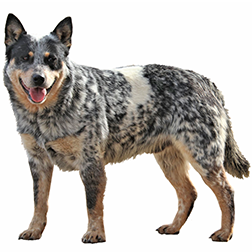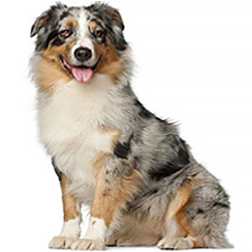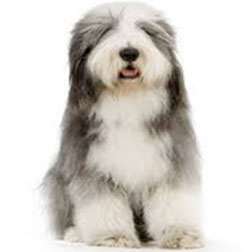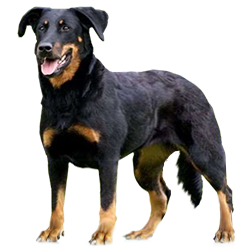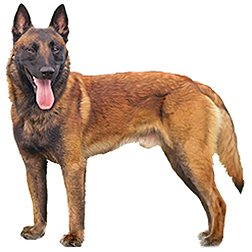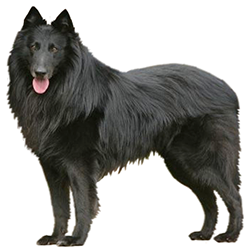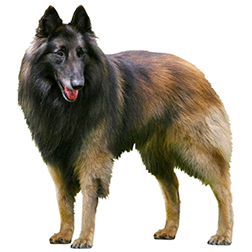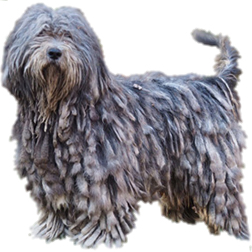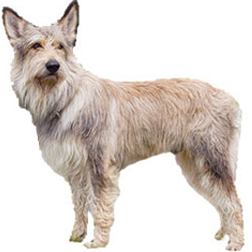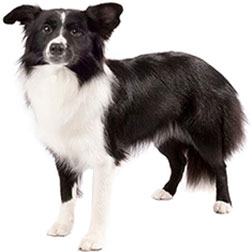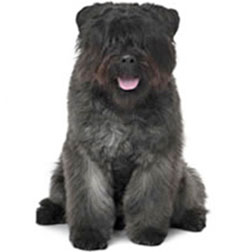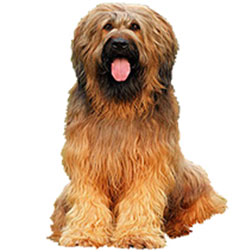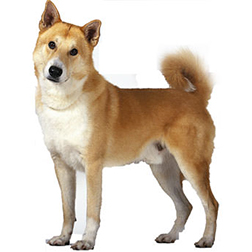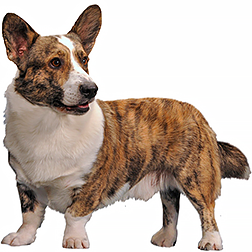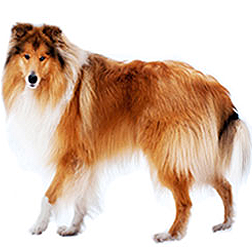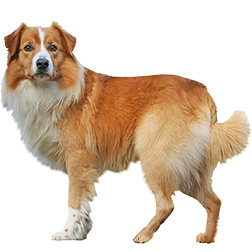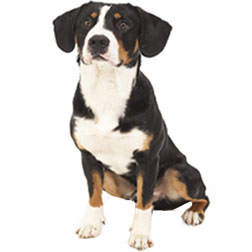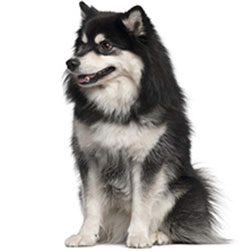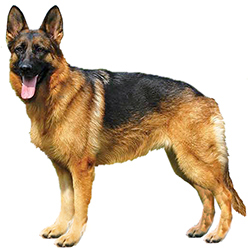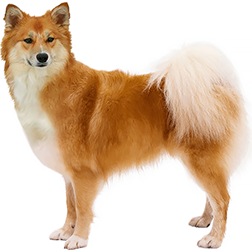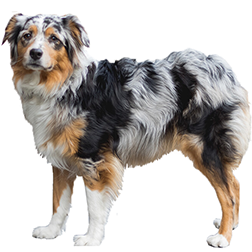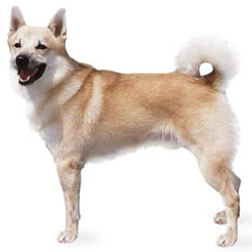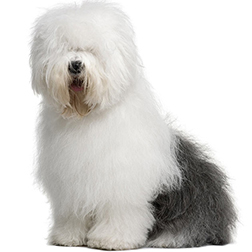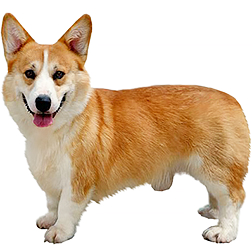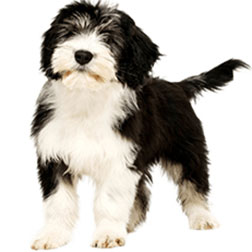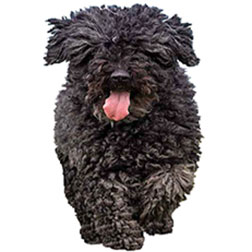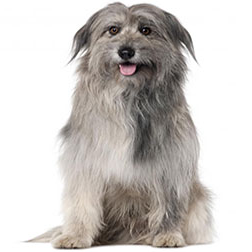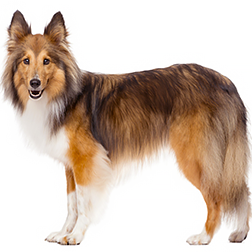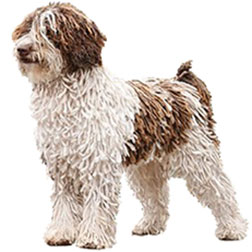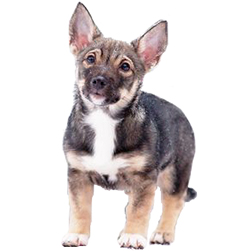Herding Dog Breeds
Ultimate Guide Herding Dog Group Guide
Introduction to the Herding Dog Group
Herding dogs, often referred to as the guardians of the flock, are some of the most intelligent and hardworking canine companions in the world. Whether they're nipping at the heels of sheep in the rolling hills of Scotland, guiding cattle across the vast Australian outback, or helping farmers in remote Nordic villages, herding dogs share a common purpose: to assist humans in managing livestock. But these dogs are so much more than farmhands; they are loyal family members, brilliant problem solvers, and energetic playmates. Their boundless energy and sharp instincts make them not only exceptional workers but also wonderful companions for active households.
From the iconic German Shepherd Dog, a breed synonymous with versatility and courage, to the ever-cheerful Pembroke Welsh Corgi, famous for its royal connections and stubby tail, the herding group showcases an impressive diversity of talents, sizes, and appearances. Despite their varied backgrounds, these dogs share a distinct ability to think independently while maintaining an unbreakable bond with their handlers. It’s no wonder they’ve captured the hearts of dog lovers worldwide.
In this guide, we’ll journey through the fascinating world of herding dogs, exploring their rich history, unique traits, and the joys and challenges of living with these intelligent and high-energy breeds. Whether you’re a seasoned herding dog owner, a prospective adopter, or simply a curious dog enthusiast, this guide will offer a blend of captivating stories, practical advice, and expert insights tailored to every reader.
A Journey Through the Group’s World
Picture this: a crisp morning in the Scottish Highlands, mist rolling across green pastures as a Border Collie gracefully weaves through a flock of sheep. With laser-sharp focus, it darts left, then right, its movements a harmonious blend of instinct and training. A single whistle from the shepherd sends the dog bounding into action, closing a gap in the herd before trotting back, tail wagging with pride. This is the essence of the herding dog group—a combination of intelligence, agility, and a natural drive to serve. These remarkable dogs have been indispensable to humans for centuries, working tirelessly to ensure the success of farms and ranches around the globe.
But herding dogs aren’t just farmhands—they’re versatile companions with big hearts and even bigger personalities. From the shaggy, loveable Old English Sheepdog to the pint-sized but mighty Pembroke Welsh Corgi, each breed brings its own unique charm to the group. Whether managing livestock or competing in agility trials, herding dogs are true athletes and loyal friends.
Why This Group Captivates Dog Lovers
So what is it about herding dogs that tugs at our heartstrings? For some, it’s their remarkable intelligence—these dogs thrive on problem-solving and love a good challenge. Owners often describe their herding companions as “having a spark,” a personality that keeps them on their toes. For others, it’s their boundless energy and enthusiasm. A Belgian Malinois dashing through an obstacle course or an Australian Shepherd twirling in excitement for a game of fetch can bring a smile to anyone’s face.
Practicality also plays a role. Herding dogs excel in active households, forming unbreakable bonds with their families while keeping everyone engaged and entertained. They’re eager to please, making them ideal partners for everything from hiking adventures to cuddles on the couch (though they might need a good run first). Testimonials from owners often echo the sentiment: “Life is never dull with a herding dog—they’re my shadow, my entertainer, and my best friend all in one.”
Surprising First Impressions
Think all herding dogs are stoic farm workers? Think again! One of the most surprising traits of this group is their playful, goofy side. The Puli, with its distinctive corded coat, is as agile as it is stylish and is known for its bounding, spring-like leaps. The Swedish Vallhund may look like a miniature wolf, but it’s a bundle of affection and loves to ham it up with its family.
A common myth is that herding dogs are purely workaholics, but they’re also highly adaptable. While they do need regular mental and physical exercise, many herding breeds are happy to embrace modern family life, especially when given a job to do—like keeping the squirrels at bay or herding the kids into the car.
Naming Origins and General Characteristics
The name “herding dog” is no mystery—these breeds were originally developed to assist humans in controlling livestock. But their roles extend far beyond the farm. Today, herding dogs excel in sports, search-and-rescue operations, therapy work, and even as police dogs. Their versatility is unmatched.
Physically, herding dogs come in all shapes and sizes, from the sleek and elegant Belgian Tervuren to the rugged and sturdy Bouvier des Flandres. They often share certain characteristics, such as keen intelligence, strong prey drive, and an uncanny ability to anticipate their handler’s cues. Temperament-wise, herding dogs are loyal, energetic, and highly trainable, though their sharp minds mean they can get bored quickly without stimulation.
It’s this blend of skill, personality, and heart that makes the herding group one of the most captivating in the canine world. Ready to dive deeper into the stories, traits, and quirks of these incredible breeds? Let’s explore further.
Historical Background
From Ancient Roots to Modern Homes
The story of herding dogs begins thousands of years ago, rooted in the agricultural revolution when humans first domesticated livestock. Early farmers needed a reliable partner to manage and protect their valuable herds. This necessity gave rise to a unique canine role, blending the wolf’s hunting instincts with the human bond cultivated through generations of selective breeding. These early herding dogs were not just helpers; they were vital to survival, ensuring that livestock remained safe from predators and stayed within designated areas.
Take the Border Collie, for instance, whose ancestry traces back to the borderlands of Scotland and England. Here, harsh weather and rugged terrain demanded a dog with intelligence, endurance, and unparalleled agility. Meanwhile, in the Netherlands, farmers developed the Bouvier des Flandres, a sturdy and versatile breed used for herding cattle and pulling carts. These dogs were indispensable, shaping the success of agricultural societies across continents.
As urbanization spread and the need for herding livestock waned, these remarkable dogs adapted to new roles in modern households. Today, herding breeds are not only cherished family companions but also excel in roles such as search and rescue, therapy work, and competitive dog sports. Their history is one of adaptation, loyalty, and an unwavering desire to serve.
Legends and Lore
Throughout history, herding dogs have captured the imagination of cultures worldwide, inspiring legends and becoming symbols of loyalty and courage. One such tale is the story of Gelert, a faithful dog in Welsh folklore. Gelert was the loyal hound of Prince Llywelyn the Great, who left him to guard his infant son while he hunted. Upon returning, Llywelyn found the nursery in disarray, the child missing, and Gelert covered in blood. In his grief, Llywelyn killed the dog, only to discover moments later that Gelert had heroically defended the child from a wolf. Though tragic, the story immortalized Gelert as a symbol of unwavering devotion.
Another famous herding dog is Shep, a Border Collie from Montana. In the 1930s, Shep followed his owner, a shepherd, to the hospital. After the man’s death, Shep continued to wait for him at the train station for over six years, greeting every train in hopes of his return. His loyalty touched the hearts of the town and travelers, earning him a statue and a place in canine history.
Cultural Connections
Herding dogs have long been celebrated for their roles in various cultures. In Australia, the Australian Cattle Dog is affectionately known as the "Blue Heeler" for its distinctive coat and heel-nipping herding style. These dogs played a pivotal role in shaping the country’s vast cattle industry, working tirelessly in the harsh outback.
In the United Kingdom, the Collie became a beloved symbol of the countryside, featured in literature and art as a loyal and picturesque farm dog. The Pembroke Welsh Corgi, with its royal connections, has been a favorite of British monarchs, especially Queen Elizabeth II, who owned more than 30 during her reign.
In Hungary, the Puli stands out with its striking corded coat, traditionally used to protect it from the elements while herding sheep. This breed is so culturally significant that its image appears on stamps, coins, and even as mascots for sports teams.
From the rolling fields of Europe to the rugged landscapes of Australia, herding dogs have left an indelible mark on human history and culture. They are not only symbols of hard work and loyalty but also cherished companions who continue to adapt and thrive in modern times.
Classification and Standards
What Makes This Group Unique?
The herding group is like the overachieving honors class of the dog world—sharp, focused, and always eager to tackle a challenge. What sets these breeds apart is their unique blend of intelligence, agility, and instinct. Imagine a team of athletes who not only excel in their sport but also moonlight as scholars; that’s the herding group in a nutshell. Their ability to work independently while staying attuned to their handler’s commands is unparalleled, making them one of the most versatile and fascinating groups in canine classification.
Kennel clubs classify herding dogs based on their traditional roles and distinct traits, such as their strong prey drive (redirected into herding behaviors), high energy levels, and a natural knack for organizing livestock. Whether they’re guiding sheep, cattle, or even geese, these dogs exhibit a rare combination of drive and discipline that earns them their place in this elite group.
Meet the Judges
When it comes to defining and classifying breeds, kennel clubs are like the keepers of the rulebook—equal parts guardians of tradition and arbiters of change. Judges scrutinize everything from a dog’s coat type and physical proportions to its gait and temperament. For herding dogs, the criteria often emphasize their working abilities alongside their appearance.
Here’s a fun tidbit: some judges say that evaluating a herding dog feels more like watching a dance recital than a competition. A Border Collie’s smooth, crouching movements, for instance, must showcase both grace and purpose, as if it’s “hypnotizing” its flock. But this isn’t always straightforward—different kennel clubs sometimes have varying interpretations of what defines the “ideal” herding dog.
Breed Wars
No canine group is without its controversies, and the herding group is no exception. One of the hottest debates revolves around the inclusion of certain breeds. For example, the Miniature American Shepherd was once seen as a smaller version of the Australian Shepherd. After years of lobbying and heated discussions, it earned its place as a distinct breed in the herding group.
And then there’s the eternal question: Should the Pembroke and Cardigan Welsh Corgis be lumped together or treated as separate breeds? While both share herding instincts and adorable proportions, their differences in origin and physical traits have kept them in distinct categories. These “breed wars” may seem trivial, but for enthusiasts, they’re as passionate as debates over sports teams or favorite bands!
Variations Across Regions
Classification standards aren’t universal, and this can lead to some fascinating regional quirks. In the United States, the American Kennel Club (AKC) groups herding dogs into their own category, highlighting their shared working heritage. Meanwhile, the Fédération Cynologique Internationale (FCI), the international governing body for dog standards, takes a slightly different approach. Under the FCI, herding dogs are often classified as part of Group 1, which includes both sheepdogs and cattle dogs.
There’s also variation in the breeds themselves. The Bearded Collie, for instance, is recognized in most countries as a herding dog, but its fluffy, whimsical appearance sometimes leads to it being mistaken for a companion breed. Similarly, the Canaan Dog, one of the oldest breeds in existence, is often celebrated for its adaptability as a working dog but doesn’t always fit the stereotypical image of a herding breed.
These regional differences add depth to the already complex world of canine classification, proving that no matter where you go, herding dogs are a class all their own.
Physical Characteristics
A Walk Through the Lookbook
Step onto the runway of the herding dog group, and you’ll be dazzled by a parade of stunning, functional fashion. First up is the sleek and stylish Border Collie, rocking a luxurious double coat in a variety of colors—black and white being the classic choice, but don’t sleep on the striking merles or tri-colors. Next, strutting down the runway with a mop-top of cords is the Puli, whose coat isn’t just for show; it’s a natural shield against harsh weather and predators.
Standing tall with a muscular, commanding presence comes the Belgian Malinois, its short, dense coat practically gleaming under the spotlight. And let’s not forget the shaggy-chic vibes of the Old English Sheepdog, a veritable cloud of fur that conceals a surprisingly athletic frame. Each breed in this group is a testament to how form meets function, with every detail designed for their historic herding tasks.
Quirky Traits and Fun Facts
Every herding dog has its signature style—and some of those features come with a twist! Take the Pembroke Welsh Corgi, for instance: its short legs aren’t just adorable—they’re an adaptation for dodging kicks from livestock. Meanwhile, the Icelandic Sheepdog sports a curled tail that’s not just a charming quirk but a handy visual signal during work in the snow-covered landscapes of its homeland.
And did you know the Finnish Lapphund has a “talkative” face? Their expressive eyebrows and cheeky smiles make them masters of non-verbal communication, a skill that likely helped them bond with reindeer herders in the Arctic Circle. Another fun fact? The Swedish Vallhund, with its fox-like features, might be one of the oldest herding breeds, tracing its lineage back to Viking times. Talk about historical street cred!
Diversity Within the Group
The herding group is a kaleidoscope of colors, sizes, and styles, offering something for every dog lover. From the petite but fearless Cardigan Welsh Corgi to the towering, wolf-like Briard, the group’s visual variety is nothing short of extraordinary. Coat types range from the silky smoothness of the Belgian Tervuren to the thick, weather-resistant locks of the Bergamasco Sheepdog.
This diversity isn’t just skin-deep—it reflects the adaptability of herding dogs to different climates and terrains. Whether it’s the sleek, agile frame of the Australian Kelpie or the rugged build of the Bouvier des Flandres, each breed is perfectly suited to its environment and purpose.
Their beauty is matched only by their practicality, proving that herding dogs are the ultimate combination of brains, brawn, and breathtaking good looks. Whether you’re drawn to the fluffy, the sleek, or the somewhere-in-between, there’s a herding dog to capture your heart and imagination.
Temperament and Personality
The Group’s Signature Charm
Herding dogs are the overachievers of the canine world, combining razor-sharp intelligence with an insatiable drive to keep busy. Picture a Border Collie that insists on herding your kids, cats, and maybe even your vacuum cleaner—it’s all in a day’s work for these instinct-driven dogs! Their focus and determination are unmatched, often leaving owners marveling at their ability to anticipate commands before they’re even spoken.
But don’t be fooled into thinking they’re all business. Herding dogs have a playful, goofy side that often catches people off guard. One moment, an Australian Shepherd is expertly navigating an agility course, and the next, it’s rolling on its back for belly rubs or spinning in circles to entertain its audience. These dogs are not just hardworking; they’re full of personality and charm, always eager to engage with their families.
What Owners Love Most
Ask any herding dog owner what makes their pet special, and you’ll get a smile and a story. Many gush about their dog’s unwavering loyalty—a German Shepherd that stays by their side no matter the situation, or a Shetland Sheepdog that always seems to know when its owner needs comfort. Others rave about their dogs’ boundless energy and enthusiasm for life. An Icelandic Sheepdog’s tail wagging at warp speed or a Pembroke Welsh Corgi enthusiastically “helping” with household chores are common tales.
Owners also appreciate the group’s uncanny knack for understanding their humans. Herding dogs are masters of reading body language, often responding to subtle cues with precision. This makes them not only excellent working dogs but also deeply intuitive companions who forge strong emotional bonds with their families.
Unexpected Personalities
While herding dogs are known for their drive and intelligence, individual dogs often break the mold, surprising their owners with unique quirks. Take, for example, a Bearded Collie named Max, who was known for herding ducks at his family’s farm. Despite his breed’s reputation for endless energy, Max preferred spending his downtime lounging on the porch, watching the other animals work.
Then there’s Bella, a Cardigan Welsh Corgi who defies the stereotype of the busy herding dog by excelling in therapy work. Her calm demeanor and gentle approach made her a favorite visitor at local nursing homes, where she brought joy to everyone she met.
Even within the same breed, personalities can vary wildly. Some Border Collies might prefer quiet, focused training sessions, while others thrive on high-energy games of frisbee. This diversity in temperament is part of what makes herding dogs so special—they’re individuals first and foremost, each with their own way of charming the world around them.
Purpose and Roles
Original Roles and Modern-Day Marvels
The herding dog group has always been defined by its purpose. These dogs were bred to be problem solvers and protectors, working alongside humans to manage livestock in often challenging environments. From rounding up sheep in the rugged Scottish Highlands to guiding cattle across the Australian outback, herding dogs were—and still are—indispensable partners on farms and ranches.
But as society has evolved, so too have the roles of these remarkable dogs. In modern times, herding breeds have found new ways to shine. Their sharp minds and people-pleasing personalities make them exceptional therapy dogs, providing comfort in hospitals, nursing homes, and disaster zones. Others have become canine athletes, dominating agility and obedience competitions with their speed and precision. And in the age of social media, herding dogs have even become internet stars—like the Border Collie who’s amassed millions of followers with jaw-dropping frisbee tricks.
Whether working in traditional roles or embracing new ones, herding dogs continue to prove their adaptability and value, making them beloved members of any community.
Famous Dogs in History
Herding dogs have had their share of the spotlight, earning a place in history for their extraordinary contributions. One legendary example is Blair, a Collie who lived in the late 19th century and was renowned for his herding abilities. Blair’s reputation was so great that he became one of the first dogs immortalized in paintings by celebrated artists of the time.
Another remarkable herding dog is Strongheart, a German Shepherd who became a Hollywood sensation in the 1920s. Strongheart starred in several silent films, captivating audiences with his bravery and intelligence. His success paved the way for future canine stars like Rin Tin Tin, who also belonged to the herding group.
In more recent history, the story of Hero the Aussie, an Australian Shepherd trained as a search-and-rescue dog, captured hearts worldwide. Hero worked tirelessly during natural disasters, using his herding instincts to navigate treacherous terrain and locate survivors.
Superstars in Action
Herding breeds continue to excel in both traditional and modern roles, showcasing their versatility and drive. The Belgian Malinois, for example, has become a favorite in military and police work. With its agility and fearlessness, this breed is often deployed for tasks like tracking, search-and-rescue, and even skydiving alongside its handlers!
Meanwhile, the Border Collie remains the gold standard for sheepdog trials. One famous Border Collie, Sweep, stunned audiences at the World Sheepdog Championships with his unmatched precision and teamwork with his handler.
On the lighter side, herding breeds are also making waves in creative fields. The Australian Cattle Dog, known for its boundless energy, frequently stars in dog dancing competitions, delighting crowds with choreographed routines that highlight its athleticism and personality.
From the battlefield to the big screen, and from the farmyard to the agility course, herding dogs continue to push boundaries and redefine what it means to have a purpose.
Training and Obedience
Training Tales
Training a herding dog can be a joy—or a comedic disaster—depending on the day. Take, for example, the story of Charlie, a Border Collie whose owner taught him to fetch the newspaper. Charlie, ever the overachiever, decided fetching just one paper wasn’t enough. One morning, he proudly delivered every newspaper from the neighborhood, leaving his owner scrambling to return them before the neighbors noticed!
On the flip side, there’s Daisy, an Australian Shepherd who excelled in agility training but had a hilarious habit of stopping mid-course to "herd" the cones. Despite her occasional detours, Daisy's sheer enthusiasm won her numerous competitions and plenty of laughs along the way. These stories highlight the charm of herding dogs: they’re brilliant, but they love putting their own spin on things.
Tips from the Pros
Training a herding dog requires patience, creativity, and a sense of humor. Here are some pro tips to help you harness their intelligence and energy:
- Start Early and Stay Consistent: Herding breeds thrive on routine and clear expectations. Begin training as soon as possible, using positive reinforcement to build trust and confidence.
- Keep It Interesting: These dogs are problem-solvers, so repetitive drills can bore them quickly. Mix up training sessions with games like hide-and-seek or teaching new tricks to keep their minds engaged.
- Channel Their Instincts: Instead of letting them herd your kids or other pets, give them a job. Fetch, frisbee, and even puzzle toys can be great outlets for their natural drive to work.
- Master Recall Commands: Herding dogs are often so focused on their “task” that they can tune out distractions—including you. A strong recall command is essential for safety and control.
- Socialize Extensively: Herding dogs can be wary of strangers and protective of their family. Early and positive socialization helps ensure they’re confident and well-behaved in various situations.
Challenges and Triumphs
Training a herding dog isn’t without its challenges. Their intelligence, while a gift, can also be a double-edged sword. Herding breeds are quick to pick up on patterns—good or bad. If you accidentally reward behaviors like barking or jumping, they’ll take that as a green light to keep doing it.
Another common hurdle is their independence. Breeds like the Bearded Collie and Pyrenean Shepherd have been bred to make decisions on their own in the field, which can sometimes translate to stubbornness during training. Overcoming this requires patience, consistency, and turning training into a fun, collaborative effort.
But when you see the fruits of your labor, it’s all worth it. A perfectly executed agility run, a flawlessly trained heel, or even just a calm, obedient dog at a crowded park can feel like a major triumph. And let’s not forget the bond that grows during the process. Training herding dogs isn’t just about teaching commands—it’s about building a partnership that will last a lifetime.
Health and Care
Keeping Them Happy and Healthy
Herding dogs are like high-performance sports cars—they’re powerful, finely tuned, and need the right care to keep them running at their best. Their energetic and intelligent nature demands more than the average dog’s maintenance. A daily walk around the block? That’s like taking a Ferrari to a grocery store—completely inadequate! Instead, herding breeds thrive on a mix of physical exercise and mental stimulation.
A balanced diet tailored to their activity level is equally crucial. Imagine fueling a race car with cheap gasoline—it just wouldn’t work. The same goes for herding dogs: they need high-quality, nutrient-dense food to keep their energy levels steady and their coats shiny. Regular grooming is also a must, especially for breeds like the Old English Sheepdog or Puli, whose thick coats can quickly become a matted mess without proper care.
Veterinary checkups are another key to their health. Herding breeds can be prone to certain genetic conditions, such as hip dysplasia in German Shepherds or Collie Eye Anomaly (CEA) in Collies and Shelties. Early detection and preventative care can go a long way in keeping your herding companion happy and healthy for years to come.
Weird but True
Herding dogs come with their share of quirky health-related traits. Did you know that Merle-coated breeds, such as some Australian Shepherds and Border Collies, can carry a gene that makes them prone to hearing or vision problems? This is why responsible breeding practices are so vital for these stunning dogs.
And then there’s the curious case of the "Collie Nose"—an autoimmune condition that affects Collies and similar breeds, causing sensitivity to sunlight. Owners sometimes joke that their Collie needs sunscreen as much as they do!
Another fun fact? Some herding dogs are so sensitive to their environment that they can detect subtle changes in a person’s health, even before symptoms appear. This has led many herding breeds to excel as medical alert dogs, capable of detecting seizures or blood sugar changes in their owners.
Playtime is Medicine
For herding dogs, play isn’t just fun—it’s a vital part of their health regimen. Their boundless energy and sharp minds mean they need plenty of opportunities to run, jump, and problem-solve. Whether it’s a game of fetch, an agility course, or a lively session of tug-of-war, these activities aren’t just entertainment; they’re exercise for the body and brain.
Herding games are particularly great for these breeds. Set up a DIY “herding pen” in your yard and let your dog “round up” toys, or practice directing them around obstacles with commands. These games tap into their natural instincts and provide the mental stimulation they crave.
And let’s not forget the emotional benefits of playtime. A tired herding dog is a happy herding dog—and a happy herding dog is less likely to get into trouble! With plenty of physical activity and interactive games, herding breeds can thrive, staying healthy and content as they bond with their humans.
Socialization and Compatibility
Your New Best Friend
Herding dogs are the ultimate definition of “loyal companion.” Their strong work ethic and deep bond with humans make them natural best friends. Once you’re part of their “flock,” you’re family for life. Take, for instance, Luna, an Australian Shepherd who follows her owner from room to room, always ready to lend a paw—or at least moral support. Herding dogs thrive on connection, often acting as a shadow to their favorite person.
But their love doesn’t stop with humans. Herding dogs are known for their adaptability, whether cuddling up with their family on the couch or actively engaging in games with other pets. While they may have an initial tendency to herd anything that moves—kids, cats, or even the family hamster—with proper training, they quickly learn the difference between “work” and “play.”
Lessons in Friendship
Socialization is essential to help herding dogs understand the world around them and thrive in a variety of situations. These dogs have a natural tendency to assess and organize their surroundings, but they need guidance to learn when it’s time to relax and just be a dog. Here are some practical tips for creating a well-rounded and socially adept herding dog:
- Start Early: Begin exposing your dog to different people, places, and situations during puppyhood. This helps them build confidence and reduces the likelihood of fear-based behaviors later on.
- Make Playdates: Arrange safe interactions with other dogs, especially those with calmer temperaments. Structured play sessions teach your herding dog how to read social cues and practice appropriate play.
- Introduce Kids and Seniors Gently: Herding dogs can be incredibly gentle and protective, but their enthusiasm might be overwhelming for young children or older adults. Teach your dog to sit and remain calm before engaging with them.
- Supervise Around Small Animals: While most herding breeds can coexist peacefully with cats or smaller pets, their herding instincts may kick in. Supervised introductions and clear boundaries will ensure harmony.
Heartwarming Scenarios
Imagine this: a Shetland Sheepdog named Buddy patiently sits next to a toddler, carefully watching as the child builds a block tower. Every time the tower falls, Buddy wags his tail in encouragement, as if to say, “Try again!” This is the kind of bond herding dogs often form with children—they’re protectors, playmates, and cheerleaders all rolled into one.
Or take Max, a Bearded Collie who lives in a retirement home. Max has become a favorite among the residents, trotting down hallways to visit his “flock” of seniors. His gentle demeanor and keen sense of who needs extra attention have brought immeasurable joy to his community.
Even with other dogs, herding breeds often show remarkable social intelligence. Lola, a Border Collie, was introduced to a shy rescue dog named Ruby. Sensing Ruby’s nervousness, Lola spent the first few playdates lying down and gently nudging toys toward her. Over time, Ruby’s confidence grew, and now the two are inseparable playmates.
Herding dogs excel in relationships because they genuinely thrive on connection. With proper socialization, they can be a perfect fit for families, singles, seniors, and even multi-pet households.
Living Arrangements and Environment
Designing the Perfect Dog Space
Herding dogs are like interior decorators with very specific opinions—they’ll rearrange your life if you don’t adapt your space to their needs. These dogs thrive in environments where they have plenty of room to stretch their legs and minds. Whether you’re in a sprawling farmhouse or a cozy apartment, you can create a tailored living arrangement to keep your herding dog happy.
Consider turning your backyard into their very own “herding headquarters.” Add agility equipment, like tunnels and hurdles, or set up a DIY obstacle course using cones and ropes. Indoors, designate a space with interactive toys and puzzle feeders to keep their sharp minds occupied. And don’t forget a cozy bed where they can recharge after a day of being your shadow! For a humorous touch, beware: a bored herding dog might decide to herd your furniture, your shoes, or even your Roomba.
City or Country Life?
While herding dogs were originally bred for the open fields of the countryside, many adapt surprisingly well to city life—if their needs are met. In rural homes, these dogs are in their element, with wide-open spaces perfect for running, exploring, and chasing imaginary sheep. But what if your herding dog calls a city apartment home?
Urban living requires a bit more creativity. Daily exercise is non-negotiable, so long walks, trips to the dog park, and even canine sports like flyball or dock diving can help burn off their energy. Apartment dwellers might also consider enrolling their herding dog in obedience or agility classes to provide both physical activity and mental stimulation.
The key is consistency. Whether they’re navigating skyscraper sidewalks or patrolling a backyard, herding dogs need a routine that includes movement, mental challenges, and, of course, plenty of love.
Climate and Quirks
When it comes to climate, herding dogs have an uncanny ability to adapt, but their reactions can be as unique as their personalities. Take the Finnish Lapphund, for example. Bred for Arctic conditions, these fluffy dogs are in their element when bounding through snowdrifts—but try to take them out on a hot summer day, and you might get a look of pure betrayal.
On the other hand, breeds like the Australian Cattle Dog are well-suited for hot, dry climates, thanks to their short, weather-resistant coats. However, even these heat-loving dogs need access to shade and water during scorching summers.
Anecdotes abound about herding dogs adjusting to the seasons. One German Shepherd, Rex, living in the Midwest, developed a charming winter habit: digging snow caves in the backyard and refusing to come inside until he was “done guarding his igloo.” Meanwhile, Bella, an Old English Sheepdog, insists on her raincoat and booties before braving a drizzle, proving that not all herding dogs are tough-as-nails weather warriors.
By understanding their natural preferences and adapting their environment to the climate, you can ensure your herding dog stays comfortable and happy, no matter the weather.
Fun Facts and Quirks
Did You Know?
Herding dogs are full of surprises, and their unique traits make them endlessly fascinating. Did you know that the Border Collie holds the title for the world’s most intelligent dog? A famous Border Collie named Chaser knew over 1,000 words and could distinguish between different objects by name, making her the Einstein of the canine world.
Or how about the fact that the Swedish Vallhund is sometimes called “the dog of the Vikings”? These little herders, with their fox-like features, are thought to have traveled with Norse seafarers, acting as both companions and watchdogs.
And here’s a quirky one: the Puli’s corded coat is so unique that it’s been mistaken for a mop more than once! Some owners even joke that their Puli is a “cleaning assistant,” though the dog’s true skills lie in herding and agility.
Bizarre Habits and Endearing Oddities
Herding dogs often develop behaviors that make their owners laugh—or scratch their heads. Take Rosie, an Australian Shepherd who insists on gathering every shoe in the house into a neat pile before bedtime. Her owners have nicknamed her “The Shoe Wrangler,” a job she takes very seriously.
Then there’s the hilarious “herding nudge.” Many herding breeds, like the Pembroke Welsh Corgi, use their noses to gently prod their humans in the right direction—whether you need it or not. Owners often find themselves “redirected” toward the kitchen at mealtime or nudged onto the couch for some cuddles.
One of the most endearing oddities of herding dogs is their love of eye contact. Known as the “herding stare,” this intense gaze isn’t just for show—it’s a crucial tool in controlling livestock. However, in a household setting, this can lead to amusing moments where your dog stares at you intently as if silently commanding, “Throw the ball. Now.”
Another charming quirk? Herding dogs are known for their “victory laps.” After successfully completing a task or simply out of sheer joy, breeds like the Shetland Sheepdog will race in circles, tails wagging furiously, as if to say, “I did it!”
Herding dogs are unforgettable not just for their intelligence and skills but for these little moments of hilarity and heart that make them cherished members of any family.
Financial and Practical Considerations
Breaking the Bank or Budget-Friendly?
Owning a herding dog can feel like owning a high-performance sports car—it’s an investment, but one that brings unparalleled joy and adventure. The initial cost of acquiring a herding breed varies widely. A purebred puppy from a reputable breeder can range from $1,000 to $3,000, depending on the breed, pedigree, and location. Adoption is a budget-friendly alternative, with fees typically ranging from $100 to $500, and the bonus of giving a deserving dog a second chance at life.
Caring for a herding dog isn’t just about the upfront cost, though. These dogs are high-energy and thrive on physical activity and mental stimulation, which means you’ll want to budget for training classes, agility equipment, or even dog sports memberships. Grooming costs vary depending on the breed; a low-maintenance Australian Cattle Dog might only need the occasional bath, while an Old English Sheepdog will rack up salon-worthy grooming bills.
Despite these costs, the emotional rewards of owning a herding dog are priceless. Their loyalty, intelligence, and sense of humor make every penny spent on them worth it.
The Real Cost of Happiness
Herding dogs have a way of turning everyday life into something extraordinary. Take the story of Maggie, a rescued Border Collie who helped her owner recover from depression. Maggie’s constant companionship and unwavering loyalty inspired her owner to take up hiking, a hobby that brought both of them immense joy and improved health. “She saved me as much as I saved her,” the owner says, a sentiment echoed by many herding dog enthusiasts.
Then there’s Max, a Cardigan Welsh Corgi who turned a suburban backyard into a neighborhood gathering spot. Known as “The Mayor” by local kids, Max spent his days enthusiastically rounding up soccer balls, chasing bubbles, and winning hearts. His owner jokes that the cost of replacing deflated balls is worth every moment of Max’s joy and the smiles he brings to others.
Owning a herding dog isn’t just about the practical costs of food, grooming, and training; it’s about the priceless memories they create. From their goofy antics to their steadfast companionship, these dogs remind us that the true cost of happiness isn’t measured in dollars but in moments shared with a wagging tail and a loving heart.
Ethical and Legal Considerations
Being an Ethical Advocate
Herding dogs, with their remarkable intelligence and strong drive, deserve owners who understand their needs and are committed to responsible care. Being an ethical advocate for herding breeds starts with making informed decisions, from choosing a reputable breeder or rescue organization to providing an environment that supports their mental and physical well-being.
If you’re considering buying a herding dog, do your homework. Ethical breeders prioritize the health and temperament of their dogs over profit. Look for breeders who conduct health screenings for common genetic conditions, like hip dysplasia or Collie Eye Anomaly, and who provide a nurturing start for their puppies. Better yet, consider adopting from a rescue—many herding dogs find themselves in shelters simply because their high energy levels weren’t a match for their previous owners.
Owning a herding dog also means understanding their instincts and ensuring they have appropriate outlets for their energy. Advocating for their needs isn’t just about fulfilling your responsibilities as an owner; it’s about setting an example for others and promoting positive, informed pet ownership.
Unleashing the Rules
Legal considerations for herding dogs can vary depending on where you live, but there are some universal principles to keep in mind. For example, leash laws are particularly important for these dogs, as their herding instincts can sometimes lead to unintended (but amusing) consequences, like trying to “round up” joggers or bicyclists at the park.
Another key area is ensuring your dog has proper identification. Microchipping and up-to-date tags are essential, especially for breeds like Border Collies or Australian Shepherds, whose boundless energy and curiosity might lead them on unexpected adventures.
If you’re in a rural area, livestock protection laws might come into play. Some regions have strict regulations regarding dogs interacting with livestock, even if your herding dog is simply following its instincts. Keeping your dog trained and under control is not only respectful but can also prevent costly fines or conflicts with neighbors.
Relatable example? Imagine owning a German Shepherd named Scout, whose favorite game is herding the neighborhood kids on their bikes. While the kids might find this hilarious, Scout’s overzealous play could lead to complaints or even legal trouble. Training Scout to focus that herding energy on agility courses instead ensures everyone—kids and Scout alike—stays happy and safe.
Promoting responsible ownership, following local regulations, and advocating for the needs of herding dogs is a way to honor these incredible breeds while ensuring they thrive in a modern world.
Group-Specific Activities and Sports
From Couch Potatoes to Champions
Herding dogs are the athletes of the canine world, always ready to turn their energy and intelligence into action. While they can enjoy a cozy evening on the couch after a long day, these dogs thrive when given a purpose or a challenge. Whether you’re looking for structured activities or creative ways to bond, herding dogs are up for anything that gets their bodies moving and minds working.
One favorite pastime is agility, where herding breeds like Border Collies and Australian Shepherds dominate the field. Picture them zipping through tunnels, leaping over hurdles, and weaving through poles with a mix of grace and determination. Not into competitive sports? No problem! Backyard obstacle courses, fetch with frisbees, or games like hide-and-seek with treats are perfect ways to channel their energy and creativity.
Herding dogs also love to work for a reward, so teaching them practical tricks—like fetching the mail, turning off lights, or tidying up toys—can keep them mentally stimulated while impressing your friends.
Tail-Wagging Competitions
Herding dogs shine in a variety of competitions, showcasing their talents and drive. Here are some popular events where these breeds take center stage:
- Herding Trials: These events are the ultimate showcase of a dog’s natural instincts. Breeds like Border Collies and Belgian Malinois dazzle spectators as they guide flocks of sheep through intricate courses, responding to their handler’s whistles and commands with uncanny precision.
- Flyball: This high-energy relay race is a crowd favorite for breeds like Australian Shepherds and Cattle Dogs. Teams of dogs race over hurdles, retrieve tennis balls, and dash back to their handlers, all while barking enthusiastically.
- Dock Diving: For water-loving herding breeds, like the Spanish Water Dog, dock diving is an exhilarating competition where dogs leap into water, chasing toys for distance or accuracy.
- Canine Freestyle (Dog Dancing): Yes, you read that right—dancing! Herding breeds’ quick feet and keen focus make them naturals for choreographed routines set to music. Who wouldn’t love seeing a Shetland Sheepdog twirl on cue?
- Obedience Trials: Herding dogs are known for their intelligence and willingness to please, which makes them top competitors in obedience events. Tasks include everything from precise heelwork to retrieving objects and even scent detection.
If competition isn’t your thing, consider attending group activities like “herding instinct tests,” where your dog can experience the thrill of working livestock in a controlled environment. These tests are a fantastic way to celebrate your dog’s heritage and give them a taste of the work they were born to do.
Herding dogs excel when they have a job, and these activities not only keep them healthy but also strengthen the bond between you and your four-legged companion. Whether you’re training for championships or just having fun, the possibilities are endless for these canine champions.
Famous Breeds and Notable Dogs
Spotlight on Stars
Herding dogs have a knack for heroism, and their stories often leave us in awe. One such star is Chaser, the Border Collie dubbed "the world’s smartest dog." Chaser could identify over 1,000 objects by name, showcasing her incredible intelligence and ability to learn. Her achievements weren’t just a parlor trick; they demonstrated the untapped potential of herding breeds when given the opportunity to shine.
Another legendary herding dog is Strongheart, a German Shepherd who became one of Hollywood’s first canine stars. Strongheart’s films in the 1920s captivated audiences and proved that dogs could be more than companions—they could be performers with heart and soul.
In the realm of heroism, Lucca, a Belgian Malinois and retired Marine Corps dog, exemplifies courage. Lucca completed over 400 missions during her service, saving countless lives by detecting explosives. Despite losing a leg in the line of duty, her spirit remained unbroken, earning her the prestigious Dickin Medal for bravery.
Paws in Pop Culture
Herding dogs have also left their pawprints on pop culture, captivating audiences with their charm and charisma. One of the most beloved examples is Lassie, the Rough Collie who became a symbol of loyalty and courage. Lassie’s adventures on both television and film inspired generations, making her one of the most iconic dogs in entertainment history.
The Pembroke Welsh Corgi is another star of the screen, thanks in part to its royal connections. From TV shows like The Crown to animated appearances in The Queen’s Corgi, these short-legged dynamos are loved worldwide for their charm and wit.
More recently, the Australian Shepherd gained fame through social media, with dogs like Secret the Aussie wowing followers with her impressive tricks and even yoga routines. These modern herding stars show that these breeds can thrive in any spotlight, whether it’s a movie set or an Instagram feed.
Herding dogs also appear in literature, from Jack London’s White Fang to the loyal working dogs featured in children’s classics like Big Red and Shiloh. Their blend of intelligence, heart, and tenacity makes them natural protagonists in stories that capture the human-animal bond.
These tales of heroism and pop culture appearances remind us why herding dogs are so adored. Their versatility, bravery, and charm make them as unforgettable on screen and in books as they are in real life.
Practical Tips for Owners
Pro Tips for Newbies
Welcoming a herding dog into your life is like bringing home a tiny tornado with a brain—it’s exciting, energetic, and occasionally a little chaotic! For first-time herding dog owners, here are some tips to make the transition smoother:
- Start Training Early: These dogs are whip-smart and eager to learn, but they also love to make their own rules if left unchecked. Begin obedience training as soon as they arrive and use positive reinforcement to keep things fun and rewarding.
- Exercise, Exercise, Exercise: A tired herding dog is a happy herding dog. Plan for daily activities that engage both their bodies and minds. Think long walks, games of fetch, or even teaching them to “herd” toys into a basket.
- Set Boundaries: Herding dogs are natural leaders, and without clear boundaries, they might try to run the household (literally). Be consistent with rules and routines so they know what’s expected of them.
- Socialize Early and Often: Introduce your herding dog to different people, animals, and environments while they’re young. This helps them grow into confident, well-behaved adults.
- Keep Them Busy: Mental stimulation is just as important as physical exercise. Puzzle toys, training sessions, and even teaching them new tricks can help prevent boredom—and the mischievous behavior that often comes with it.
Common Owner Missteps
Even the most well-meaning herding dog owners can stumble into a few hilarious (and sometimes frustrating) pitfalls. Here’s what to avoid:
- Underestimating Their Energy Levels: “I thought one walk a day would be enough,” says every overwhelmed owner of a herding dog ever. Herding breeds need more than a stroll—they crave action-packed activities and challenges. Without them, they might channel their energy into redecorating your living room or orchestrating a household “herding mission.”
- Neglecting Mental Stimulation: These dogs are brainiacs, and boredom is their arch-nemesis. One owner learned this the hard way when their Border Collie, left alone with nothing to do, figured out how to open the fridge and organize its contents. Moral of the story: keep their minds busy, or they’ll find their own “projects.”
- Skipping Socialization: Herding dogs can be wary of strangers or overly protective without proper exposure to the world. Forgetting this step can lead to embarrassing situations, like your dog trying to herd your dinner guests into the living room.
- Ignoring Their Instincts: Many owners laugh off herding behaviors—until their dog starts rounding up children, chasing cyclists, or even herding their cars. Redirect these instincts into structured activities to keep everyone happy and safe.
- Not Embracing Their Quirks: Herding dogs have big personalities, and trying to stifle their unique traits can backfire. Embrace their quirks, like their intense eye contact or tendency to nudge you toward the fridge at mealtime. It’s all part of their charm.
Owning a herding dog is a learning curve, but with patience, consistency, and a sense of humor, you’ll find yourself with a loyal, brilliant companion who’s as fun as they are rewarding.
Resources and Support
Join the Pack
Owning a herding dog is an adventure, and you don’t have to go it alone. One of the best ways to deepen your knowledge and connection to these incredible breeds is by joining breed-specific clubs and online communities. These groups are treasure troves of advice, camaraderie, and shared enthusiasm for all things herding dogs.
Organizations like the American Kennel Club (AKC) and United Kennel Club (UKC) offer resources for breed enthusiasts, from training tips to competition opportunities. Many breeds also have dedicated clubs, such as the Border Collie Society of America or the Australian Shepherd Club of America, where you can meet like-minded owners, participate in events, and even get involved in herding trials.
Online communities, from Facebook groups to breed-specific forums, are fantastic for exchanging tips, sharing photos, and celebrating your dog’s quirks with people who just get it. These connections can turn your journey as a herding dog owner into a shared experience filled with advice, encouragement, and plenty of laughs.
Best Reads for Dog Lovers
For those who want to dive deeper into the world of herding dogs, there’s no shortage of engaging books and articles to explore. Here are some must-reads to add to your shelf:
- “The Intelligence of Dogs” by Stanley Coren
This classic explores what makes dogs—especially herding breeds—so smart and trainable. It’s packed with fascinating insights into canine psychology and behavior. - “Dog Sense: How the New Science of Dog Behavior Can Make You a Better Friend to Your Pet” by John Bradshaw
A deep dive into understanding your dog’s instincts and how to better communicate with them. Perfect for anyone trying to decode their herding dog’s herding stare! - “Training the Herding Dog” by Vergil S. Holland
This practical guide is a must for anyone looking to get into herding trials or just better understand the work these dogs were born to do. - Breed-Specific Articles and Blogs
Websites like the American Kennel Club and Your Purebred Puppy offer in-depth articles tailored to individual breeds. From training tips to health advice, these resources are invaluable for herding dog owners. - “Lassie Come-Home” by Eric Knight
A heartwarming fiction classic, this tale of loyalty and adventure will resonate with anyone who loves herding dogs—or just great storytelling.
By connecting with the right communities and diving into these resources, you’ll not only enrich your understanding of herding dogs but also build a network of support and inspiration to guide you on your journey.
Conclusion
Why You’ll Fall in Love
Herding dogs are more than just brilliant workers or athletic companions—they are heart-stealing bundles of intelligence, loyalty, and charm. Their quick minds and boundless energy are matched only by their deep bond with their families, making them more than pets—they’re partners in life. From their quirky herding instincts to their playful antics, herding dogs bring a unique joy to every day. Whether it’s a Border Collie’s laser-focused stare, a Corgi’s happy wiggle, or a German Shepherd’s unwavering devotion, these breeds embody the perfect mix of brain and heart.
Their adaptability means they can thrive in any setting, as long as they’re given the love, care, and activity they need. For those willing to invest time and energy, herding dogs return the favor tenfold with their humor, affection, and unshakable loyalty.
Your Next Adventure Awaits
If you’re considering welcoming a herding dog into your life, get ready for an adventure like no other. These dogs will challenge you, inspire you, and make you laugh every single day. They’ll push you to be more active, more creative, and more connected—to them and to the world around you.
Whether you’re watching a Shetland Sheepdog master an agility course, snuggling with an Old English Sheepdog after a long day, or simply marveling at the intelligence behind a Border Collie’s eyes, owning a herding dog is an experience that will leave you forever changed.
So why wait? Dive into the world of herding dogs and discover a companion who will not only keep up with your every move but also fill your life with loyalty, joy, and unforgettable memories. Your next great adventure is waiting—go ahead and take the leap!
Did You Enjoy this Article? Share it and Help Us Spread the Word!
If you found this article helpful, we'd appreciate it if you could share it with your friends or link to it from your website, blog, or group! You can also use the convenient social share tabs on the left side of the screen to instantly share this page to your social media feed. For more ways to support and promote the American Breeder Community, visit our Share & Promote Together page for social media posts and memes you can copy and share. Your support means the world to us!
Disclaimer: The information provided in this article is for general informational purposes only and does not constitute legal, medical, financial, or professional advice. While we strive for accuracy, we make no representations or warranties regarding the completeness, accuracy, reliability, or suitability of the information. Please consult with a professional before making decisions based on the content provided. American Breeder Inc. assumes no responsibility for any errors or omissions or for the results obtained from the use of this information.

